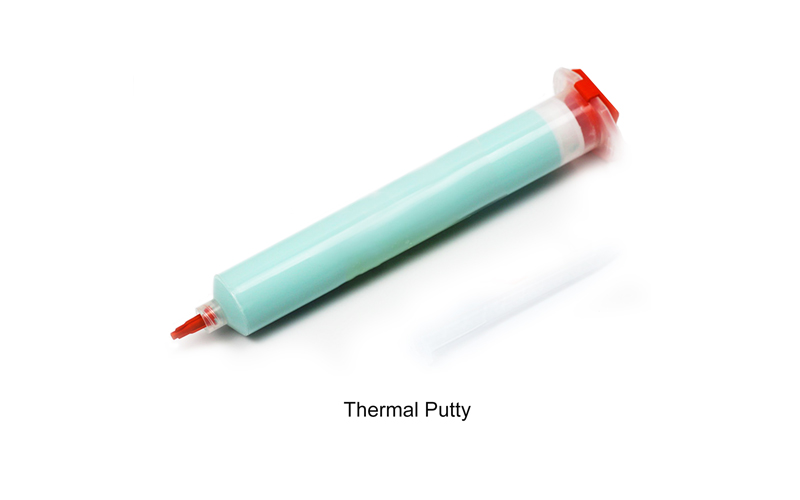What's the Difference Between Thermal Pads and Putty Especially in Terms of Heat Transfer?
- Posted on:2024-09-04 09:28:00
- Source:AOK Thermal Pad Manufacturer Company News
Thermal pads and thermal putty are both used for heat transfer in electronic devices, but they differ in thermal material properties, application methods, and performance.
1. Material Composition and Structure
Thermal Pads:
Usually made from a solid but flexible material such as silicone, with embedded thermally conductive fillers like ceramic or metal particles. Comes in pre-formed sheets of varying thicknesses. They are solid, yet pliable enough to conform to surfaces.
Thermal Putty:
A paste-like substance that also contains thermally conductive fillers but is more malleable. Structure: Putty is viscous and can flow to fill gaps and voids between surfaces.
2. Application Method
Thermal Pads:
Applied by placing the pad directly between the heat source (like a CPU or GPU) and the heat sink. Pads are easy to use since they are pre-cut and do not require any curing or spreading.
Thermal Putty:
Applied by spreading the putty over the heat source or directly onto the heat sink. It requires careful application to ensure uniform coverage.
3. Thermal Conductivity and Performance
Thermal Pads:
Typically lower than that of putty. Pads generally offer thermal conductivity ranging from 1 to 12 W/mK. Performance: Suitable for applications where surfaces are relatively even and the gaps are consistent, but they might not fill all microscopic gaps as effectively as putty.
Thermal Putty:
Generally higher than that of thermal pads, with values often exceeding 10 W/mK depending on the product. Because it's more malleable, putty can fill microscopic voids and irregularities more effectively, leading to better thermal contact and potentially better heat transfer in certain situations.
4. Ease of Use and Reusability
Thermal Pads:
Easier to use and less messy compared to putty. They can be reused in some cases, but the performance might degrade after removal and reapplication.
Thermal Putty:
Messier to apply and remove, and it often cannot be reused once applied. However, it can provide superior performance in custom or irregular applications.
5. Typical Use Cases
Thermal Pads:
Commonly used in consumer electronics like laptops and desktop computers, where ease of application and handling is important.
Thermal Putty:
Often used in high-performance or industrial applications where maximizing heat transfer is critical, especially in cases with irregular surfaces.
Thermal putty generally offers better heat transfer capabilities due to it's ability to conform to surfaces more effectively, but it's more challenging to apply and may not be reusable. Thermal pads are easier to use and are often sufficient for most consumer applications, though they may not perform as well in scenarios requiring maximum heat dissipation.
If you would like to learn more about AOK performance thermal materials, please visit our website at www.aok-technologies.com


